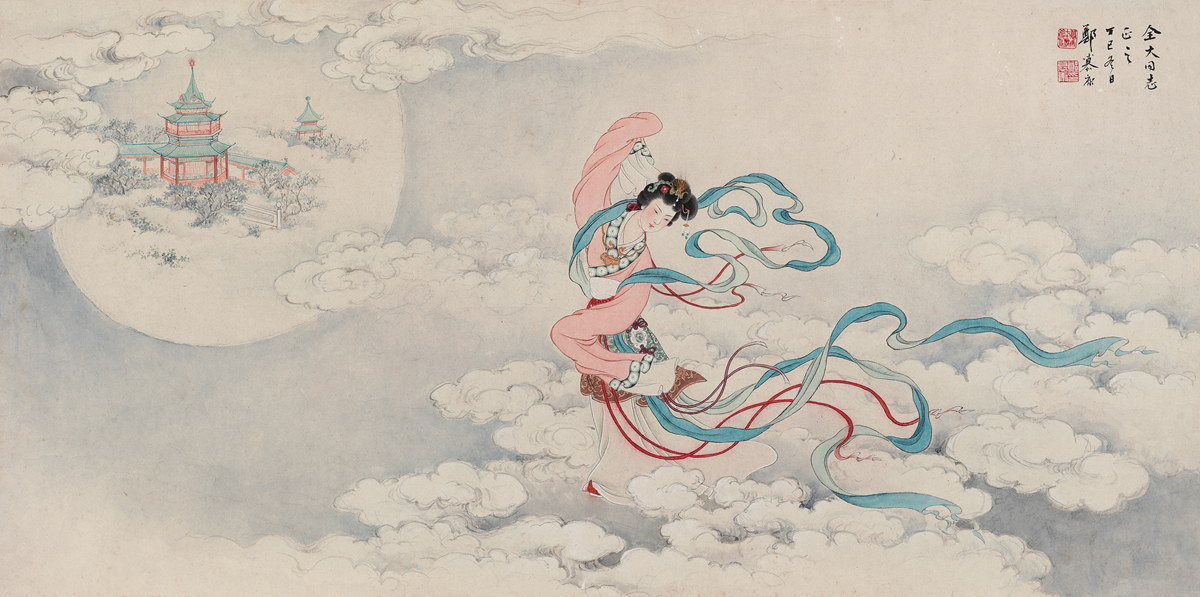Folk roots of the Mid-Autumn Festival

The enduring popularity of Chinese traditional festivals is relevant to myths and legends. Chang E Flying to the Moon is one of the well-known legends related to the Mid-Autumn Festival in China.
Celebrated on the 15th day of the eighth month in the Chinese lunar calendar, the Mid-Autumn Festival falls on the night of a full moon. Ancient dynasties also called it the Moon Festival or Harvest Festival.
The origins of the Mid-Autumn Festival fall into two broad categories: moon worship and autumn sacrifice.
Moon worship has a long history in China. Ancient people believed that the moon and the sun were the two poles of the world and they represented yin and yang, two opposing principles in nature. The former is feminine and negative, while the latter is masculine and positive. In folk beliefs, people worshipped the sun and moon in equal measure. They felt connected to the waxing and waning of the moon, then began to offer sacrifices to the moon which became a typical form of worship. Although traditions have changed over time, people’s respect for the moon has never faded.
Agriculture was the foundation of ancient China, and people depended on the moon for food. When there was a bumper harvest, ancient people believed that they needed to show gratitude for blessings from Heaven. Sacrifices were made in every season. In spring, people gave offerings to the god of heaven and earth to pray for a good harvest.
In autumn, they offered sacrifices to the god of grain for a good harvest. At the same time, the emperor and feudal princes made sacrifices in the ancestral temples, in a ceremony called qiuchang.
In fact, moon worship and autumn sacrifice are both ways of showing respect to nature.
The origins of traditional Chinese festivals are closely linked to farming, the calendar, astronomical phenomena and seasons, while their enduring popularity is relevant to myths and legends. Chang E Flying to the Moon is one of the well-known legends related to the Mid-Autumn Festival in China. Chang E ate her beloved husband’s elixir and flew to the moon. Hearing this, people burned incense under the moon and prayed for good luck and peace for Chang E. Then, the Mid-Autumn Festival with the custom of worshipping the moon came into being.
There have been diverse festive activities to celebrate the special day from ancient times to the present.
Sharing mooncakes is one of the hallmark traditions of this festival. It is said that the custom of eating mooncakes dates back as far as the Tang Dynasty (618-907), but the connection between eating mooncakes and admiring the full moon wasn’t established until the Song Dynasty (960-1279). Cooks in the Ming and Qing dynasties (1368-1911) carved images from legends onto mooncakes. In contemporary times, mooncake workshops began to emerge, so the process became more delicate with finer ingredients. Also, mooncakes can be categorized into a variety of flavors according to regions such as Suzhou, Canton and Taiwan.
China has a long history of moon sacrifice and admiration. Ancient people in the Zhou Dynasty (1046 –256 BC) gave offerings to the moon every Mid-Autumn Festival. The custom of admiring the moon was so popular in the Tang Dynasty that many poets wrote famous lines to praise the moon. These forms of activities were held on a larger scale in the Ming and Qing dynasties, traces of which can be seen in a great number of historic sites all around China.
Reunion is the central theme of the Mid-Autumn Festival. In Chinese culture, a round shape symbolizes completeness and has a similar meaning with harmony. Thus, the sharing and eating of round mooncakes among family members signifies the completeness and unity of families.
In addition to family units, reunions during the Mid-Autumn Festival also represent the harmony of a country or the entire world.
